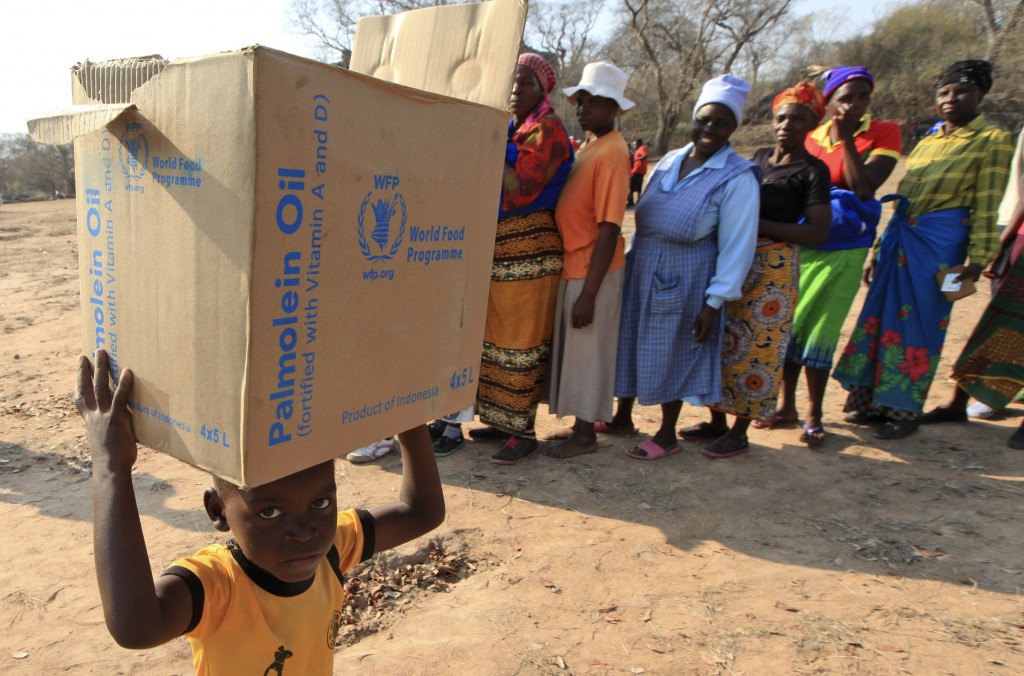
This year’s El Niño, which forecasters are calling one of the strongest ever, may have passed its peak strength, but changes in global weather will continue to wreak havoc on food supplies across Africa, Asia, and Latin America for months to come, according to the United Nations’ World Meteorological Organization (WMO). Severe droughts and floods triggered by this year’s El Niño have already had a devastating effect on food security throughout the world, leaving some 100 million people with food and water shortages.
Zimbabwe has declared a state of disaster in some parts of the country as drought has decimated crop harvests. According to reports, as many as 2.4 million people, or more than a quarter of the population, are in need of food aid. Countries across southern Africa — from South Africa to Botswana — are also in the midst of drought, after suffering through the driest rainfall season in 35 years. Officials in Mozambique, which has suffered through more than two years of drought, expect that 400,000 people will be in need of food aid by March.
“The situation is critical in Mozambique,” Abdoulaye Balde, the World Food Program’s Mozambique director, told the Guardian. “We are at the point of no return. Even if it rains now it will be of limited use for growing maize. There are just a few weeks for the rains to potentially fall this year.”
According to UNICEF, an estimated one million children in eastern and southern Africa are suffering from severe acute malnutrition due to food shortages.
We are at the point of no return. Even if it rains now it will be of limited use for growing maize
Dry conditions have also plagued harvests in Central and Latin America, with more than 3.5 million people facing food shortages in El Salvador, Guatemala and Honduras. In Haiti, an estimated 3 million people, or a nearly a third of the population, face food shortages due to drought. Of those, some 800,000 are deemed to be in urgent need of assistance, according to the UN.
In parts of South America, El Niño could bring a different problem: too much water. Health officials are worried that expected heavy rains in South America, which are linked to the El Niño event, could expand potential breeding grounds for mosquitoes, a frightening prospect for countries currently dealing with an unprecedented outbreak of the Zika virus, which is spread through mosquitoes.
In Papua New Guinea, an El Niño-driven drought, combined with frost, has impacted up to a third of the island-nation’s population, leaving millions without enough food. Papua New Guinea is extremely self-dependent when it comes to food, with nearly 83 percent of its food produced in-country. As Oxfam Australia’s climate change policy advisor Simon Bradshaw told the Guardian in October, “any hit on food production poses immediate challenges in terms of food security.”
El Niño events occur when ocean temperatures in the equatorial Pacific Ocean are abnormally warm, leading to extreme weather events like droughts or flooding elsewhere. In 1997-98, the strongest El Niño ever recorded caused more than $45 billion in global economic damage and led to an estimated 23,000 deaths.
Despite the El Niño pattern’s declining strength, experts expect that it will continue to impact both global precipitation and temperature trends, with food shortages lasting into 2017.
Researchers have suggested that strong El Niño patterns, like the one seen this year, could become more common as global warming increases ocean temperatures. In a study published in 2014 in the journal Nature Climate Change, researchers concluded that the likelihood of a “super El Niño” doubles with climate change, from one roughly every 20 years to one every 10 years.